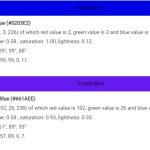A kibibyte is a unit of data storage (digital information), just like a byte. But what does the letter “K” stand for? Kibi stands for kilo-binary – 2^10 or 1,024 bytes. So in other words, 1 kibibyte = 1024 bytes.
The kibibyte is often used to measure the size of an audio or video file. For instance, a CD contains 74 minutes worth of music and it takes up 700 MB worth of space on your hard drive, which means that this album has a total file size of approximately 683594 Kibibytes or 700,000 kilobytes. So now you know what kind of units are being used when people talk about how much data they need for their multimedia projects!
What is the difference between a kilobyte and a kibibyte?
The main difference between a kilobyte and a kibibyte is that the main unit of measurement for the kibibyte, called the kibi or KiB, represents 2^10 or 1024 bytes. The kilobytes (KB) are 10^3 or 1,000 bytes each.
By understanding the difference between bytes and kilobytes, and kibibytes, we can better comprehend our computer usage habits as well as optimize our storage accordingly. The same goes with any other digital device – smartphones have built-in memory limits so be mindful not to exceed its maximum storage.





